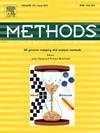离子导入对离体牛眼模型角膜特性的影响
IF 4.3
3区 生物学
Q1 BIOCHEMICAL RESEARCH METHODS
引用次数: 0
摘要
本研究通过开发和验证离体牛眼模型室来评估离子导入对药物递送和角膜特性的影响,解决了局部眼部给药中药物生物利用度低的挑战。经上皮电阻(TEER)被评估为解剖牛眼角膜上皮完整性的预测因子。TEER测量值与亚甲基蓝渗透相关,证实了4.2 kOhm·cm2的阈值是上皮完整性的指标。模型腔室使药物溶液在角膜的指定区域周围的应用没有泄漏,便于电极的放置和恒定电流的应用。与被动扩散相比,以2 mA/cm2的速度离子透入6分钟显著增加罗丹明B对角膜的渗透近6倍(约1.3µg/cm2 vs. 0.24µg/cm2),允许在房液中检测药物水平(27.9±0.5 ng/mL)。形态学分析显示角膜的暂时性变化,包括表面粗糙度增加2.3倍(从44.6 nm到105.3 nm),基质中胶原蛋白轻度破坏,而鲍曼膜保持完整。观察到角膜硬度的显著增加,离子导入后应力-应变曲线下的面积增加了200%。这些发现为离子胁迫诱导的变化提供了见解,并强调了该模型在优化眼部药物输送系统方面的潜力。此外,该模型符合3Rs原则,有助于促进对由结构和生物力学改变驱动的前段疾病的理解。本文章由计算机程序翻译,如有差异,请以英文原文为准。

Iontophoresis impact on corneal properties using an ex vivo bovine eye model
This study addresses the challenge of low drug bioavailability in topical ocular administration by developing and validating an ex vivo bovine eye model chamber to evaluate the effects of iontophoresis on drug delivery and corneal properties. Transepithelial electrical resistance (TEER) was assessed as a predictor of corneal epithelial integrity in dissected bovine eyes. TEER measurements were correlated with methylene blue permeation, confirming a threshold of 4.2 kOhm·cm2 as an indicator of epithelial integrity. The model chamber enabled the application of drug solutions around a defined area of the cornea without leakage, facilitating the placement of electrodes and the application of constant electric currents. Applying iontophoresis at 2 mA/cm2 for 6 min significantly increased rhodamine B penetration into the cornea by nearly sixfold compared to passive diffusion (approximately 1.3 µg/cm2 vs. 0.24 µg/cm2), allowing detectable drug levels in the aqueous humor (27.9 ± 0.5 ng/mL). Morphological analyses revealed temporary changes in the cornea, including a 2.3-fold increase in surface roughness (from 44.6 nm to 105.3 nm) and mild collagen disorganization in the stroma, while Bowman’s membrane remained intact. A significant increase in corneal stiffness was noted, with a 200 % rise in the area under the stress–strain curve after iontophoresis. These findings provide insights into iontophoresis-induced changes and highlight the model’s potential for optimizing ocular drug delivery systems. Additionally, the model aligns with the 3Rs principles and could be instrumental in advancing the understanding of anterior segment diseases driven by structural and biomechanical alterations.
求助全文
通过发布文献求助,成功后即可免费获取论文全文。
去求助
来源期刊

Methods
生物-生化研究方法
CiteScore
9.80
自引率
2.10%
发文量
222
审稿时长
11.3 weeks
期刊介绍:
Methods focuses on rapidly developing techniques in the experimental biological and medical sciences.
Each topical issue, organized by a guest editor who is an expert in the area covered, consists solely of invited quality articles by specialist authors, many of them reviews. Issues are devoted to specific technical approaches with emphasis on clear detailed descriptions of protocols that allow them to be reproduced easily. The background information provided enables researchers to understand the principles underlying the methods; other helpful sections include comparisons of alternative methods giving the advantages and disadvantages of particular methods, guidance on avoiding potential pitfalls, and suggestions for troubleshooting.
 求助内容:
求助内容: 应助结果提醒方式:
应助结果提醒方式:


